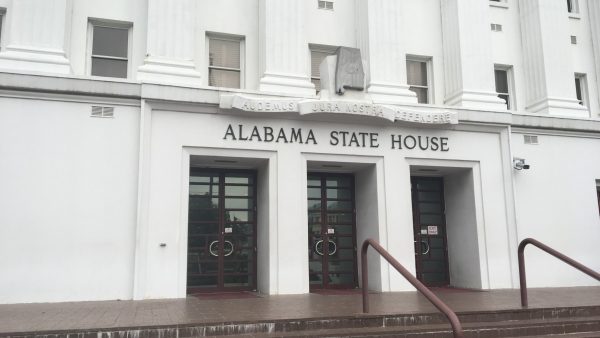Pt2-RuralChallenges
Safe transportation to and from school is a challenge across the country. Roughly 800 children die making that trip each year, and the dangers vary by location. The rural south has its own challenges, some preventable, some not. In Part Two of a three-part series on school transportation, Dan Carsen has more from the Southern Education Desk at WBHM:
The student parking lot of Lincoln High School in rural Talladega County, about 40 miles east of Birmingham, is a chaotic place at certain times of day. Principal Terry Roller says despite strict rules, it’s not exactly a safe environment:
“In a place like ours where you don’t have a mass public transit system, and kids are having to carpool and do other things, often times, you don’t have the resources and parents can’t leave jobs, you end up putting kids in cars with other kids. And I tell people all the time that the most dangerous place in Lincoln between three o’clock and three-fifteen is the high school parking lot.”
Fortunately those young drivers account for a small percentage of students who travel to school. Roller says roughly 97 percent of the students in his district ride buses, some of them for more than an hour. But riding the bus is no guarantee of safety, either.
As Roller points out, “You have children as young as kindergarten, you know, five-year-olds that are riding school buses with potentially nineteen-year-old kids. And that’s not always the best mix. It’s just that interaction and mixture of kids: the conversations, their subject matter, the language. Often times there are incidents of violence on school buses.”
Roller and other administrators would love to send multiple buses to the same neighborhoods to avoid those issues, but with fuel costs high and education budgets tight, that’s just not going to happen. He points out, though, that state-of-the-art digital camera systems aboard Lincoln’s buses have cut down on serious incidents, not to mention helped catch motorists who run school-bus stop signs.
School transportation officials around the state worry that fuel costs and budget cuts could detract from the safety or quality of the service they provide. But not all rural transportation challenges can be addressed through education budgets. And there are some challenges urban students never face. Fifteen-year Lincoln high bus driver Sedric Wilson remembers a deer that attacked his occupied bus on a country road early one morning. Besides rattling Wilson and the kids on the bus, the 10-point buck did $3,000 worth of damage.
Wilson was also transporting children during the infamous April tornadoes. He had to find a relatively safe place to pull over while pine boughs landed loudly on the roof.
“By the grace of God,” he says, “nobody was hurt. We made it here safely. We were shook up, but we made it safely.”
But state education and transportation officials say the most serious school safety issue in rural areas is people driving dangerously near schools and buses. Harold Pearson, Transportation Supervisor in Cherokee County, remembers a recent incident involving a Budweiser truck, a veteran bus driver, and an elementary student early one morning:
“She pulled up to stop, and there was an 18-wheeler went around her on the right-hand side – the side that the door is on. And the child was on the first step of the bus when the truck went by. If there had been a second of difference, the child would’ve been run over.”
The bus’s cameras recorded the incident, and the driver was charged with running the bus’s stop sign, reckless driving, and reckless endangerment of the student. Pearson says potentially tragic near-misses are not that unusual:
“Any delivery truck or 18-wheeler, somebody with the knowledge of the load can set down and put a price on that load, but on these school buses, there’s no way we can put a price on there. We always have people – seems like every day – running stop signs. I just wish people would pay more attention to their driving. It keeps me staying on pins and needles the whole time.”
Though long bus trips down winding, isolated roads aren’t ideal or accident-proof, they are generally the safest way for students to get to school. According to the National Highway Traffic Safety Administration and the National Academy of Sciences, on average, 815 children die each year in crashes during the normal hours of school travel. Two percent of those deaths happen in buses. Statistically, taking a bus to school is more than seven times safer than riding in a passenger car.
Or, as Pearson puts it, “The two safest means of transportation in the world are elevators and school buses.”
Risks to students trying to get to and from school are complicated and vary according to where they live. Buses may not be the fastest way, and there are inherent problems, but it seems clear that they’re the safest way for rural students to make the trip each day … that is, if there’s a route for them.
Florida’s 6-week abortion ban will have a ‘snowball effect’ on residents across the South
Abortion rights advocates say the ban will likely force many to travel farther for abortion care and endure pregnancy and childbirth against their will.
Attitudes among Alabama lawmakers softening on Medicaid expansion
Alabama is one of ten states which has not expanded Medicaid. Republican leaders have pushed back against the idea for years.
Birmingham is 3rd worst in the Southeast for ozone pollution, new report says
The American Lung Association's "State of the Air" report shows some metro areas in the Gulf States continue to have poor air quality.
Why haven’t Kansas and Alabama — among other holdouts — expanded access to Medicaid?
Only 10 states have not joined the federal program that expands Medicaid to people who are still in the "coverage gap" for health care
Once praised, settlement to help sickened BP oil spill workers leaves most with nearly nothing
Thousands of ordinary people who helped clean up after the 2010 BP oil spill in the Gulf of Mexico say they got sick. A court settlement was supposed to help compensate them, but it hasn’t turned out as expected.
Q&A: How harm reduction can help mitigate the opioid crisis
Maia Szalavitz discusses harm reduction's effectiveness against drug addiction, how punitive policies can hurt people who need pain medication and more.







